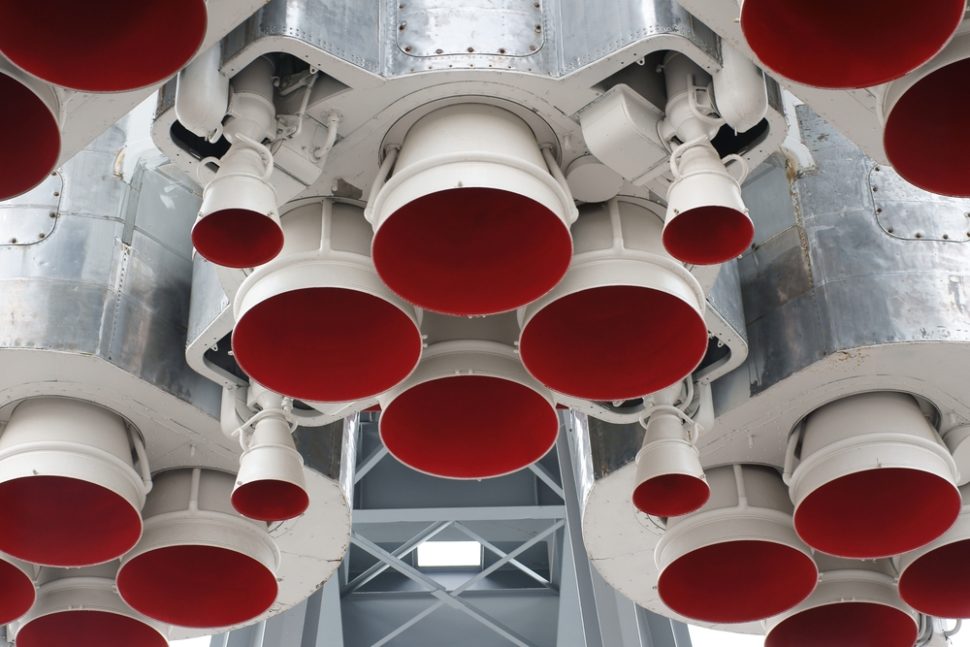One of the most difficult technological challenges facing scientists in the early days of the space race was how to escape Earth’s gravity.
Since Robert H. Goddard launched the world’s first liquid-propellant rocket in 1926, propulsion technology hasn’t progressed that much.
Chemical propulsion is still the best tech we have tested and used.
There are four principal conventional aircraft and spacecraft propulsion systems: the propeller, the turbine engine, the ramjet, and the rocket.
They all function based on Newton’s third law, which states that every action has an equal and opposite reaction.
In a rocket, the engine burns fuel to create an equal and opposite thrust that lifts it off the ground.
While traditional propulsion methods have gained a lot in efficiency, they can’t meet our future air and space propulsion needs.
Here are two alternative propulsion systems that could bring us into a true Space Age.
1. Rotating Detonation Propulsion
Conventional combustion engines convert chemical fuel into heat that drives the kinetic power responsible for the thrust.
Basically, a Rotating Detonation Engine (RDE) ensure high thermal efficiency through the optimization of detonation and combustion processes. RDEs also limit pressure losses and minimize fuel consumption.
Rotating detonation is one of the most technically feasible candidates among alternative propulsion systems.
To curb the dependence of its ships on gas-turbine engines for propulsion and electricity, The U.S. Navy is investigating the viability of rotating detonation propulsion.
This week, the U.S. DoE’s Office of Fossil Energy announced the awarding of $6 Million in funding for R&D projects where RDEs appear as one of the five areas of interest.
RDEs are more fuel efficient and higher performing than their traditional combustion counterparts. If they do solve some of our propulsion problems, they are less next-gen environmentally speaking.
Although more efficient, RDEs would still use fossil fuels, albeit less hungrily.
2. First Ionocraft to fly, With no Moving Parts
Here, we’re getting into relatively more speculative territory regarding alternative propulsion systems — Ion Drives.
An Ion drive is a propulsion system that uses ions to create thrust.
Last November, MIT engineers announced the successful testing of the first-ever plane with no moving parts.
Instead of a liquid fuel engine with all the buzzing parts, MIT’s aircraft uses silent ionic wind as a powerful thrusting force.
The plane, thanks to a high electric field, generates nitrogen charged atoms and expels them from its back to thrust itself.
Ionic wind is “a silent but mighty flow of ions produced aboard the plane, and that generates enough thrust to propel the plane over a sustained, steady flight.”
Ionic thrusters sound futuristic and speculative, which is true, but they’re in fact an old concept from as early as the 1920s.
MIT’s 5-meter wide prototype demonstrates the technical feasibility of ionic propulsion that uses no fossil fuel, thus generating zero emissions.
Ion wind propulsion systems would very likely land first in drones, to arrive later to larger aircraft like commercial planes.
Further on into the future, we may see ionic wind-powered spacecraft venturing into deep space doldrums, without having to carry their fuel on board.


















Sorry,but the article is not correct. The first heavier than air ion propelled aircraft with onboard power was not made by the student team at MIT, their paper is wrong. Please google US Patent No. 10,119,527. You will find sufficient verification.